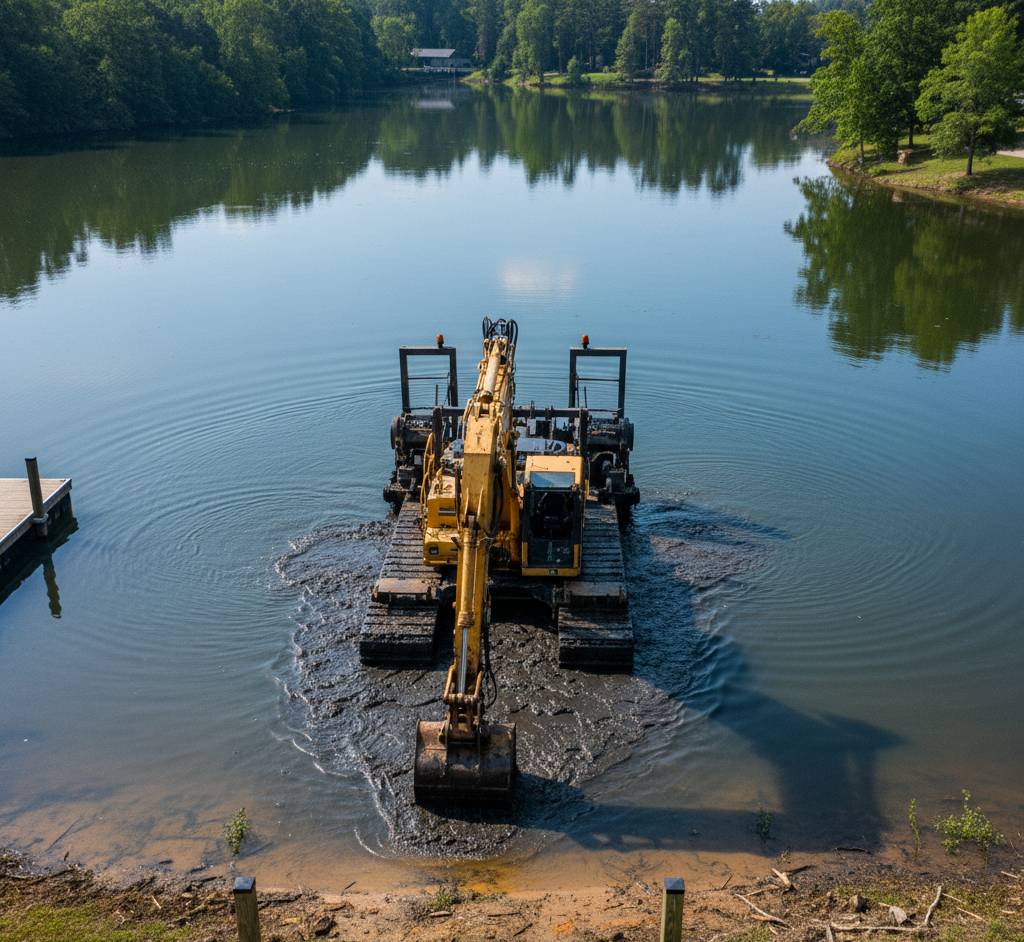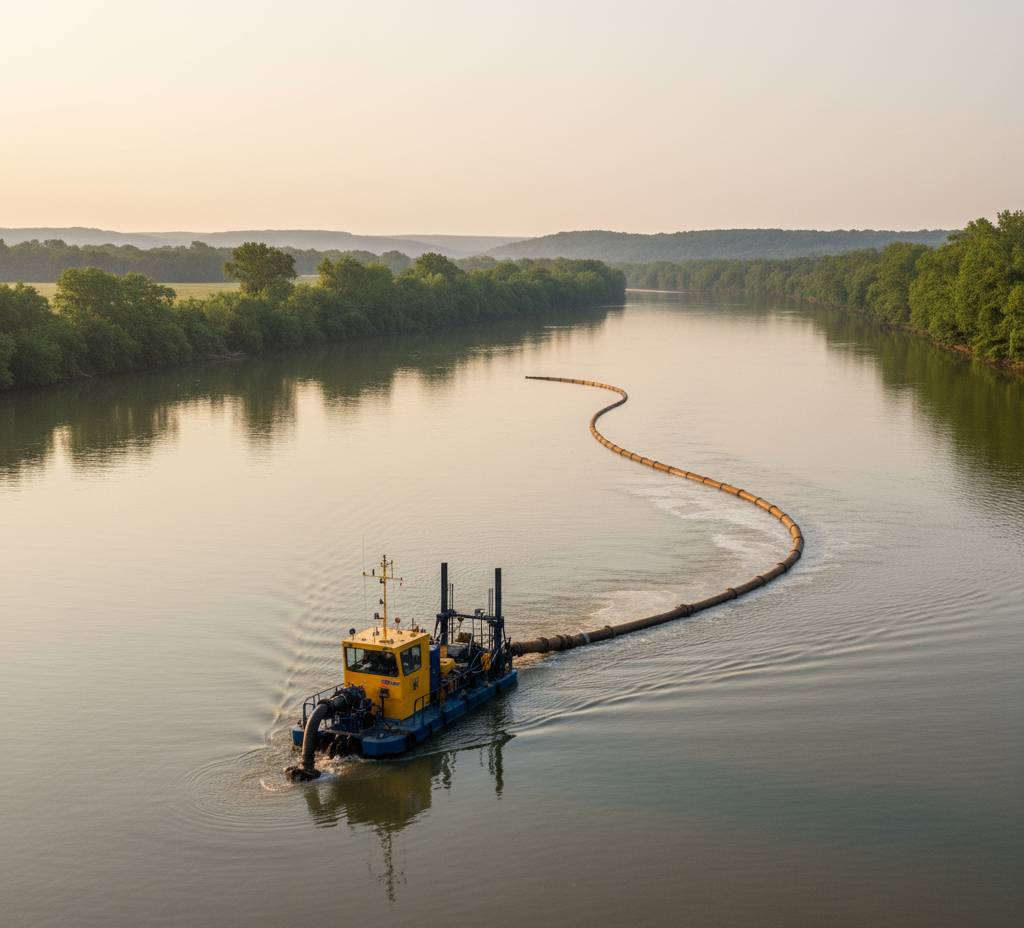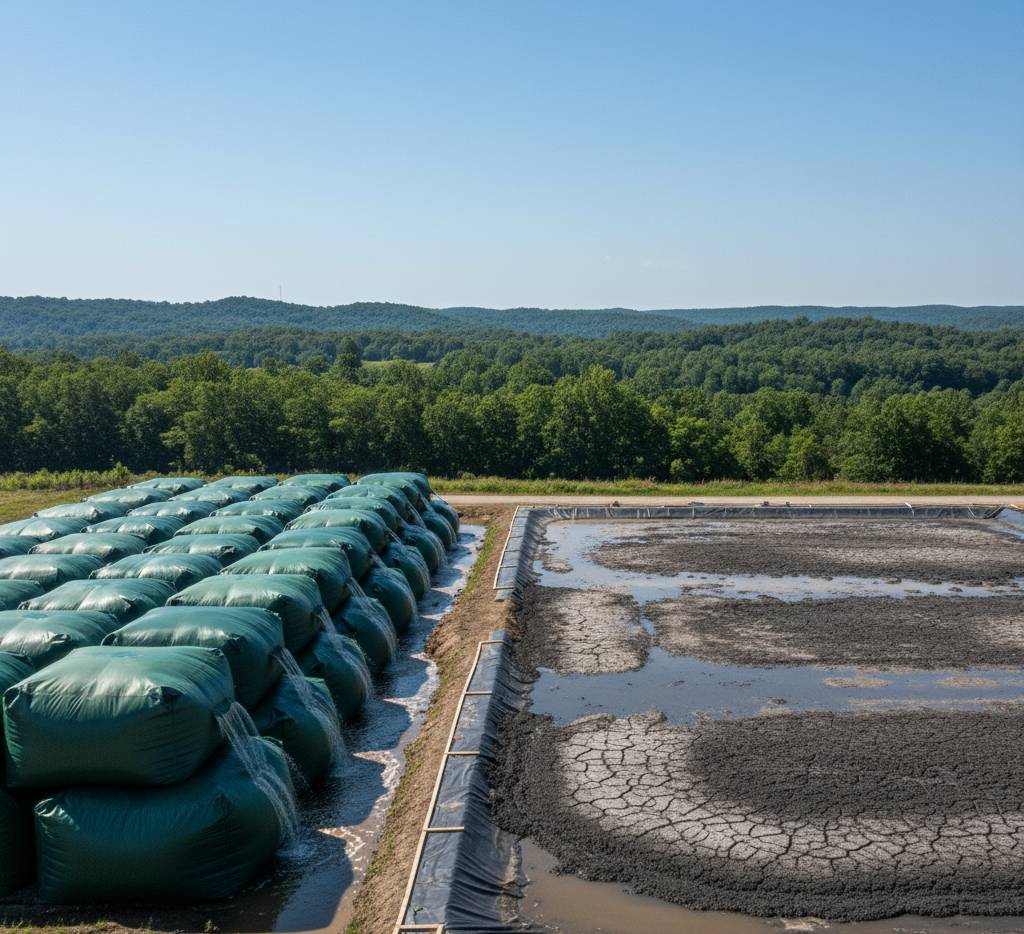Tennessee Waterway Restoration
Professional Dredging Services in Bartlett, Tennessee
Restoring depth, clarity, and usability to Bartlett's ponds, lakes, reservoirs, and waterways. From TVA impoundments to private farm ponds, we deliver compliant, effective dredging solutions throughout Tennessee.
Why Choose Us for Bartlett Dredging Projects?
Proven expertise in Tennessee's unique waterway challenges
-
🎯 Tennessee Waterway Specialists
Deep understanding of Tennessee's diverse waterways—from Appalachian foothill reservoirs to Mississippi River harbors. We navigate TDEC regulations, TVA requirements, and local watershed authorities with expertise.
-
⚙️ Dual-Method Capabilities
Both mechanical and hydraulic dredging equipment to match your project needs. Whether it's a shallow farm pond or a deep TVA reservoir cove, we have the right approach.
-
📋 Permitting & Compliance Support
We help Bartlett property owners navigate Tennessee's permitting process, including TDEC aquatic resource alteration permits, TVA Section 26a approvals, and local ordinances.
-
♻️ Beneficial Reuse Options
Reduce costs by reusing dredged material on-site for landscaping, shoreline stabilization, or agricultural use in Tennessee's clay and loam soils—compliant with TDEC beneficial reuse permits.
-
🌊 Seasonal Scheduling Optimization
We plan projects around Tennessee's seasonal conditions—avoiding summer stratification periods, working with TVA reservoir drawdowns, and timing around spring flooding patterns.
Expert Lake Dredging & Water Quality Services in Bartlett, Tennessee

Professional Mechanical Dredging
Production excavation for sediment removal in Bartlett lakes - ideal for near-shore silt removal, muck removal, and targeted lake desilting at docks, ramps, and tight coves. We clean out lake areas that limit boat access and quickly restore depth across Tennessee, especially in TVA reservoirs and Cumberland River tributaries.

Hydraulic Sediment Removal
Continuous pumping out sediment for longer reaches and sensitive frontage in Bartlett lakes. Great for channel straightaways and hard-to-reach coves, delivering steady sediment removal with a compact footprint and predictable daily yardage, suitable for Tennessee's river systems and mountain-fed lakes.

Comprehensive Sediment Management
Full-cycle sediment management for Bartlett properties: volume targeting, access, dewatering, beneficial reuse, or approved haul-off. We align method to budget while maintaining Tennessee DEP compliance and production tempo, considering state-specific disposal options and beneficial reuse on agricultural land.

Aquatic Vegetation Management
Targeted aquatic vegetation removal with adjunct duckweed control, watermeal removal, and algae control to protect gains after lake dredging in Bartlett. Supports clarity, navigation, and habitat goals alongside water quality management for Tennessee lakes, managing aquatic vegetation common in Tennessee waterways.

Sediment Dewatering Solutions
Right-sized dewatering approaches for Bartlett sites (geotextile tubes or pad drying) that keep sludge removal, desilting, and export efficient—critical to schedule and cost control for Tennessee lake projects, especially during spring flooding seasons.

Continuous Lake Management
Post-project lake maintenance for Bartlett properties: seasonal cove checks, small-scope clean out lake actions, inlet silt removal, and circulation improvement to slow re-siltation specific to Tennessee lake conditions, including flood recovery and seasonal sediment management.
Ready to Restore Your Bartlett Lake or River?
Ready to move forward with dredging services for your Bartlett property? Our team will review your project goals, provide a detailed timeline and cost estimate, and explain the best approach—whether mechanical dredging or hydraulic. You'll receive clear pricing and a step-by-step plan designed to restore depth and improve your Tennessee shoreline, compliant with state wetland protections.
FAQ
Frequently Asked Questions About Dredging in Bartlett, Tennessee
How much does it cost to dredge waterways in Bartlett?
Every dredging project in Bartlett is unique, but you can expect costs to range between $30–$100 per cubic yard depending on access, sediment volume, waterway type, and disposal requirements specific to TDEC regulations and TVA requirements.
For a baseline, removing 500 cubic yards is often used as a starting estimate for cost forecasting in Tennessee. Our team also provides strategies to reduce costs while protecting your waterway's ecosystem and complying with Tennessee's environmental standards.
How can I save money on dredging in Bartlett?
The biggest expense for Tennessee waterway dredging is often trucking spoils offsite. Each truckload cost depends on distance to disposal sites, fuel, and fees influenced by seasonal weather conditions.
If the material can be safely reused on-site (for landscaping, shoreline stabilization, or agriculture in Tennessee's clay and loam soils), you can significantly reduce hauling costs. We work with Bartlett property owners to identify the most cost-effective options that comply with local regulations, including beneficial reuse permits from TDEC.
How do I know if my Bartlett waterway needs dredging?
There are several signs your Tennessee waterway may need dredging:
- Shallow areas where boats used to navigate easily, exacerbated by spring flooding and seasonal rains
- Excessive weed or algae growth common in Tennessee's TVA reservoirs, farm ponds, and creeks
- Cloudy water from stirred-up sediment after storms
- Fish kills or declining aquatic life due to low oxygen
- Shoreline "creeping in" from sediment buildup and erosion
- Reduced flow in streams and creeks due to sediment accumulation
A bathymetric survey can confirm sediment accumulation in your Bartlett waterway and help determine how much material needs to be removed to restore proper depth and flow.
Do I need permits to dredge my waterway in Bartlett?
In most cases, yes. Tennessee requires permits for dredging ponds, lakes, rivers, creeks, and reservoirs to protect water quality and aquatic habitats, typically through the Tennessee Department of Environment and Conservation (TDEC) or TVA (Tennessee Valley Authority) and local watershed authorities.
We help Bartlett property owners navigate the permitting process and ensure all work complies with Tennessee environmental regulations and local ordinances, including aquatic resource alteration permits and TVA Section 26a approvals.
Why should I dredge my Tennessee waterway?
Over time in Tennessee, erosion, runoff from developments, and decaying vegetation cause sediment buildup—often from agricultural runoff and seasonal flooding in Tennessee river basins. Left unchecked, this leads to:
- Loss of depth and usable water area for boating, recreation, and livestock watering
- Declining water quality from nutrient overload in ponds and streams
- Increased aquatic weeds like Eurasian watermilfoil and algae blooms
- Negative impacts on fish populations and Tennessee's river, reservoir, and creek ecosystems
- Reduced water storage capacity in farm ponds and irrigation reservoirs
Dredging restores your Bartlett waterway to its original depth and flow, improves water clarity, enhances aquatic habitat for native species, and improves recreational and agricultural use.
How do you actually remove the muck from Bartlett waterways?
There are two main methods we use in Tennessee:
- Mechanical Dredging (our specialty): Uses excavation equipment to physically remove sediment from ponds, lakes, creeks, and small reservoirs. Material is then spread onsite or hauled to approved Tennessee disposal sites, compliant with TDEC rules.
- Hydraulic Dredging: Works like a giant vacuum, pumping sediment into de-watering bags where it dries before being reused or disposed of per Tennessee regulations, ideal for Tennessee's TVA coves, farm ponds, and private waterways.
We'll help determine the best method for your Bartlett waterway based on depth, access, waterway type, and project goals, considering state-specific factors like proximity to TVA shorelines and protected tributaries.
Will dredging harm the fish in my Bartlett waterway?
No, when done properly according to Tennessee best practices. Dredging stirs up sediment, but this can be controlled with turbidity curtains and other methods approved in Tennessee to minimize impacts during the warm summer months when stratification occurs.
In fact, dredging often improves fish habitats long-term in Tennessee waterways by restoring depth, oxygen levels, and water clarity—creating healthier ecosystems for Tennessee native fish species like largemouth bass, crappie, catfish, and bluegill.
What happens to the spoils from dredging in Bartlett?
"Spoils" are the sediment, muck, sand, and organic material removed from your Tennessee waterway bottom.
This material is often nutrient-rich and can be reused as topsoil or soil conditioner on your Bartlett property. Many Tennessee property owners use it in gardens, landscaping, pasture improvement, or agriculture, especially in rural and agricultural areas. Reusing spoils not only saves on hauling costs but also recycles natural resources and reduces trips to Tennessee disposal facilities, subject to TDEC testing for contaminants.
How long does a typical dredging project take in Bartlett?
Project timelines for Bartlett waterways vary based on sediment volume, waterway size, access, and weather conditions like summer thunderstorms and spring flooding. A small pond project might take 1-2 weeks, while larger lake or reservoir restoration projects can take several weeks to months, especially with permitting delays.
We provide detailed timelines during the consultation phase and keep Bartlett property owners updated throughout the project. Seasonal considerations in Tennessee, such as avoiding extreme weather seasons, can affect scheduling—we often recommend dredging during fall and winter months when TVA draws down reservoir levels.
Not From Bartlett? Choose Your Tennessee Community Below
We provide dedicated dredging services across Tennessee's major regions, with mobilization windows planned around seasonal water levels, TVA reservoir schedules, and site conditions.
Memphis & West Tennessee
Mississippi River, Wolf River Harbor, McKellar Lake, Nonconnah Creek, and agricultural reservoirs—logistics hubs, warehouse districts, riverfront industry, and suburban lakes across Germantown, Collierville, and Lakeland (Garner Lake). Ideal for dredging, dewatering, stormwater detention, and shoreline remediation.
Greater Nashville & Middle Tennessee
Music City's Cumberland River corridor, Old Hickory & Percy Priest Lakes, Cool Springs corporate campuses, and fast-growing HOA communities in Williamson, Rutherford, Sumner, Wilson, and Robertson. Includes the Upper Cumberland corridor (Cookeville–McMinnville) with Center Hill & Cordell Hull access—retention systems, amenity lakes, and municipal stormwater.
Knoxville–Chattanooga (Tennessee Valley)
TVA reservoirs along the Tennessee River & I-75 corridor—Fort Loudoun, Tellico, Watts Bar, and Chickamauga—plus marina coves, mountain-fed creeks, and industrial riverfronts. Ideal for marina dredging, sediment removal, intake/outfall maintenance, and shoreline stabilization from the Smokies foothills to the Valley.
Tri-Cities & Northeast Tennessee
Boone, Watauga, and South Holston Lakes; Nolichucky & Holston river systems; and Appalachian foothill reservoirs—marinas, coves, municipal intakes, and trout-stream inlets around Johnson City, Kingsport, Bristol, and historic downtowns. Great fit for desilting, dewatering, and shoreline remediation.
Inquire about availability for special projects outside these core Tennessee areas (including neighboring states in the Southeast).